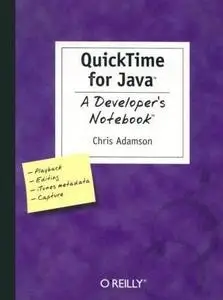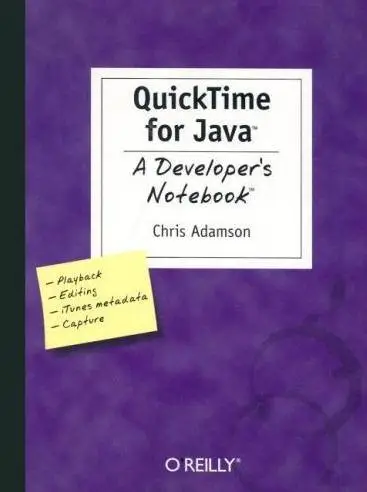Quick Time for Java: A Developer's Notebook by Chris Adamson
Publisher: O'Reilly Media; 1 edition (February 1, 2005) | ISBN-10: 0596008228 | CHM | 2,4 Mb | 233 pages
Publisher: O'Reilly Media; 1 edition (February 1, 2005) | ISBN-10: 0596008228 | CHM | 2,4 Mb | 233 pages
QuickTime Java (QJT) is a terrific multimedia toolkit, but it's also terrifying to the uninitiated. Java developers who need to add audio, video, or interactive media creation and playback to their applications find that QTJ is powerful, but not easy to get into. In fact, when it comes to class-count, QuickTime Java is nearly as large as all of Java 1.1. Once you learn the entire scope of Apple's QuickTime software, you really appreciate the problem. At its simplest, QuickTime allows Mac and Windows users to play audio and video on their computers. But QuickTime is many things: a file format, an environment for media authoring, and a suite of applications that includes browser plug-ins for viewing media within a web page, a PictureViewer for working with still pictures, QuickTime Streaming Server for delivering streaming media files on the Internet in real time, and QuickTime Broadcaster for delivering live events on the Internet. Among others. As if that weren't daunting enough, the javadocs on QJT are wildly incomplete, and other books on the topic are long out of date and not well regarded, making progress with QTJ extremely difficult. So what can you do? Our new hands-on guide, QuickTime Java: A Developer's Notebook, not only catches up with this technology, but de-mystifies it. This practical "all lab, no lecture" book is an informal, code-intensive workbook that offers the first real look at this important software. Like other titles in our Developer's Notebook series, QuickTime Java: A Developer's Notebook is for impatient early adopters who want get up to speed on what they can use right now. It's deliberately light on theory, emphasizing example over explanation and practice over concept, so you can focus on learning by doing. QuickTime Java: A Developer's Notebook gives you just the functionality you need from QTJ. Even if you come to realize that 95% of the API is irrelevant to you, this book will help you master the 5% that really counts.



